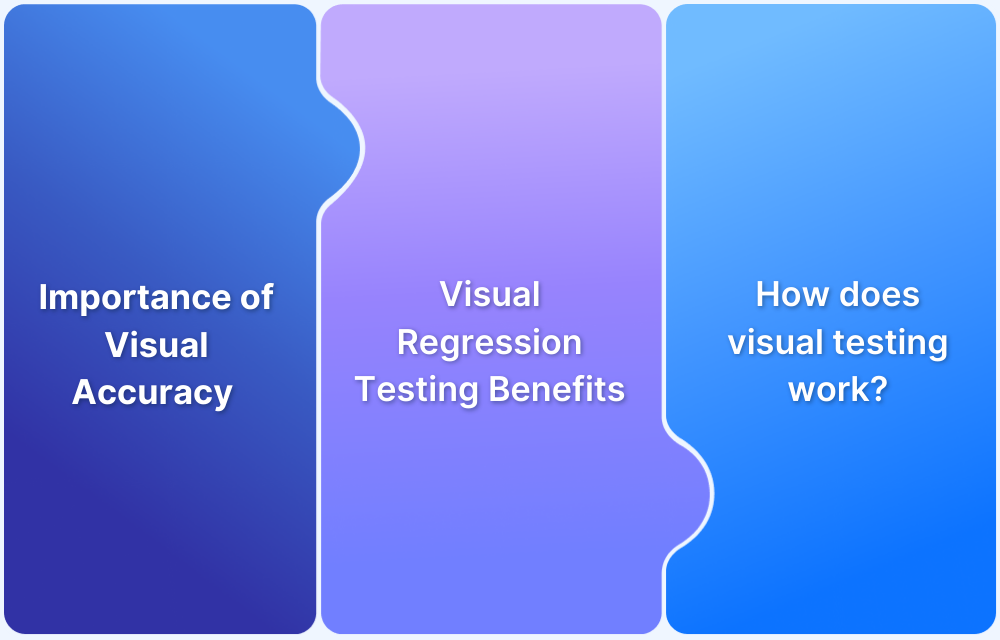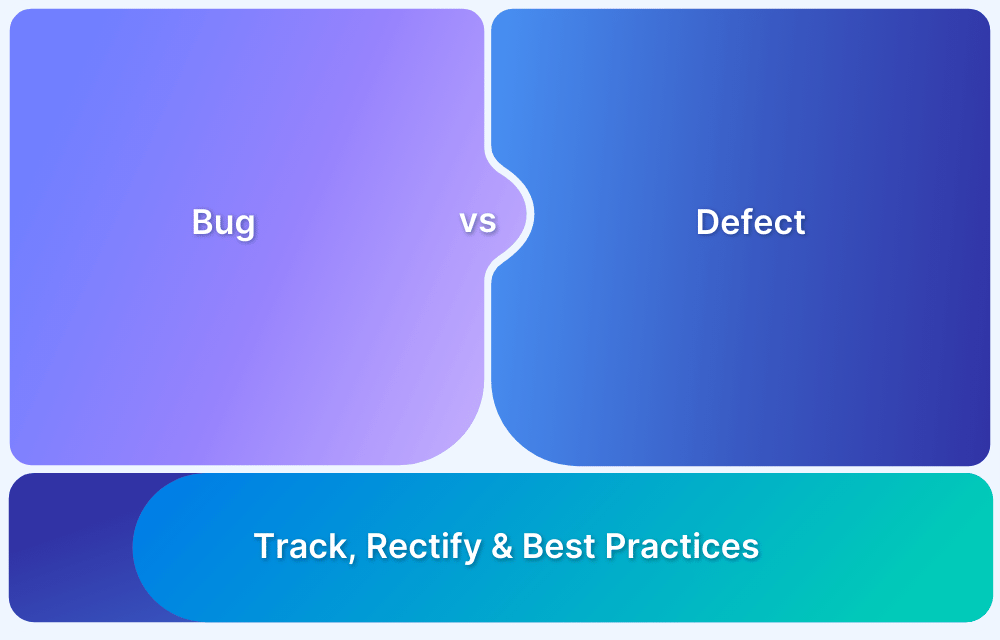Almost all enterprise apps and websites are mission-critical software used to solve problems, offer products/services, provide support, speed up essential processes, and help make critical decisions.
These could be Business Intelligence tools, apps (from travel bookings to banking), websites (for the same purposes), payment processing software, ERP solutions, etc. Look at any website or app connected to a business (Airbnb, Amazon, Adidas, ESPN, Verizon; a few examples), and it is something that will require enterprise test automation.
In digital market, enterprise software is integral to running a business profitably. Naturally, the software must undergo comprehensive testing before deployment for public usage. Given the complexity of these sites and apps and the cross-platform and cross-device compatibility required from them, large-scale manual testing is not feasible.
Automation is the only way for organizations to execute reliable and extensive enterprise software testing. With the right tools and frameworks, automation testing can help devs and testers evaluate software performance. It also helps them work out the end-to-end business processes and their suitability for meeting business goals.
What is Enterprise Test Automation?
Enterprise Test Automation refers to any testing process or pipeline utilized on an enterprise-level. In the real world, this usually translates to the testing of websites and apps that drive business for the said enterprise.
Benefits of Enterprise Test Automation
Here are some of the core benefits of Enterprise Test Automation:
- Increased Efficiency: Automation reduces manual effort, allowing teams to execute tests faster and more frequently.
- Improved Test Coverage: Automated tests can cover a larger number of scenarios, including edge cases that might be missed in manual testing.
- Faster Feedback Loops: Automated tests provide immediate feedback on code changes, enabling quicker bug detection and resolution.
- Consistency and Accuracy: Automated tests eliminate human error, ensuring consistent execution of test cases.
- Cost Savings: While the initial investment in automation can be high, the long-term savings from reduced manual testing efforts can be significant.
- Enhanced Collaboration: Automation facilitates collaboration among development and testing teams by integrating testing into the development workflow.
What to Automate in Enterprise Test Automation?
Generally, automation in enterprise software testing covers the following:
- Business-critical performance aspects of a website or app. This usually includes all features that require Continuous Monitoring.
- Features and modules that are too complex to test manually, AKA ones prone to human error.
- Features that take time to test and yet must be repeatedly tested to ensure high levels of software performance.
- Unit tests to verify how a function or class operates in isolation.
- Integration tests that verify how several components work with each other.
- End-to-end testing to verify user journeys and transactions across multiple software components, whether at UI or API level.
- Performance tests that evaluate the software’s stability, scalability, and availability under various levels of traffic, load, etc.
Challenges of Enterprise Test Automation
Here are some of the core challenges of Enterprise Test Automation:
1. Planning
For any organization starting with enterprise testing, it is easy to underestimate how much time and resources will be required. One can start off by automating some UI tests, but tests have to be far more extensive to count. Testing teams have to plan schedules and gather resources for:
- Locating and using a test automation framework that supports the reusing of data and data-driven testing – required to make automation sustainable.
- Keeping the framework updated to match updates to the software.
- Studying and resolving test failures, a number of which can be “false positives” or the result of flaky tests.
- Figuring out what caused false positives – issues with the test environment, test data, a brittle test script, etc.
- Adding and updating tests as the software is updated.
- Creating test cases and scripts for advanced user scenarios that should fit into a Continuous Testing in DevOps environment.
- Keeping up with the inevitably increasing volume of tests and test results.
2. Software and Test Complexity
All user actions, and consequently, all software tests are not created equal. The effort and resources required to automate basic actions (creating and logging into a user account) are far less than automating tests for business-critical processes. The latter usually involves multiple layers and third-party databases (APIs, SAPs, mainframes, etc.), which have to be accounted for when creating test scripts and use cases.
To set up tests that can reliably reflect software quality in a test environment, testers need:
- The skills and tools to automate tests across multiple lawyers, technologies, databases, and integrated components.
- Secure and relevant test data to set up tests that mimic real user conditions in pre-prod.
- Sustained, reliable, and cost-effective access to required hardware and software for accurate test execution – real devices, APIs, third-party applications, etc.
3. False Positives
One of the most common consequences of extensive automated testing suites is the emergence of false positives. As tests expand and cover more software areas, the number of false positives will increase, both in number and frequency.
On the other hand, one cannot ignore false positives, however tempted they might be to do so. Devs may start to think all bugs detected in tests are false positives, which makes it harder for testers to get them to take critical issues seriously. Obviously, there is no point in running tests if their results are not taken seriously.
4. Scalability
When implementing enterprise automation, it is best to start with the highest performing teams – they tend to be eager about challenging themselves and have the skills required for adopting new processes and methodologies.
However, a few elite teams cannot be expected to provide the speed, accuracy, transparency, and efficiency required to roll out highly optimized software in restricted timelines. Eventually, most teams will have to adopt automated testing. If they are not equipped to do so, the organization will have to provide relevant training and tools – time – and money-consuming propositions.
Best Practices of Enterprise Test Automation
Some of the best practices you should follow during Enterprise Test Automation:
- Prioritize Test Cases: Focus on automating high-impact and repetitive test cases first, such as regression tests.
- Invest in Training: Provide training for team members on tools and best practices to ensure effective use of automation.
- Maintain Flexibility: Be open to adapting your automation strategy as the technology landscape and business needs evolve.
- Implement Version Control: Use version control systems for test scripts to manage changes and facilitate collaboration among team members.
- Emphasize on Scalability: Keeping Test Automation scalable ensures higher efficiency at speed and scale for your enterprise test suite.
- Conduct Regular Reviews: Periodically review automated tests to ensure they remain relevant and effective, making adjustments as necessary.
- Integrate with Other Processes: Ensure that test automation is part of the overall software development lifecycle, integrating with requirements management, defect tracking, and performance monitoring.
Implementing Enterprise Testing in the Real World
Any software being developed in the 21st century has to provide optimal functionality in various real-world conditions. Websites and apps are accessed via hundreds or thousands of device-browser-OS combinations. These can be a combination of recent or earlier versions of a said browser, device, or OS. When the numbers add up, they can be quite overwhelming.
There’s no point using emulators or simulators to run tests. The whole point of automated testing is to push software to market as fast as possible. Virtual machines simply do not provide the real user conditions required to monitor a website or app accurately and evaluate their performance. In that case, why waste time using them at all?
All software tests must be run on real browsers, devices, and operating systems regardless of the software. When seeking to establish automation testing protocols, organizations can choose to create their own on-premise device labs, housing the latest and legacy devices.
They might have the funds to do so, but no matter what, building a device lab from scratch takes time, effort, and resources that don’t necessarily have to be spent.
Instead, enterprises can choose to use a cloud-based testing tool built especially to meet their testing requirements. BrowserStack for Enterprise facilitates enterprise-wide Agile testing that allows teams to ship products continuously, at scale.
Why use BrowserStack for Enterprise Test Automation?
BrowserStack for Enterprise it is ideal for Enterprise Team usage as it provides a vast number of features:
Advanced administrative controls
- Access control: Create sub-teams, customize dashboard views, and allocate parallel threads to teams based on their testing needs.
- Single sign-on: Simplify the login experience. Integrate BrowserStack with your existing identity provider for authentication, like SAML 2.0, IDP, SP, and more.
- Auto-provisioning/de-provisioning: Eliminate BrowserStack activation and deactivation from employee onboarding and offboarding processes.
Network controls for complete data governance
- IP Whitelisting: Test securely through your IP access restrictions. Whitelist a range of BrowserStack IPs for all inbound and outbound traffic from our remote devices.
- Advanced Local Testing: Enforce org-wide monitoring, logging, and security policies. Ensure that all traffic from BrowserStack Cloud is resolved through your network for every user.
Actionable test insights for Agile transformation
- Test insights: Evaluate the performance of automation testing across the organization. Filter analytics by teams, builds error rates, device and browser coverage, and more.
- Usage analytics: Enable teams to plan and optimize their test runs based on their BrowserStack usage.
Infinitely scalable for growing test suites
- Parallelization: Run hundreds of tests simultaneously on your parallel threads—and put the rest on queue, without worrying about dropped tests. Learn more about parallel testing
- Coverage: Release cross-browser and cross-device compatible experiences. Test throughout delivery cycles on 3500+ browsers and real mobile device combinations.
- Availability: Built for reliable feedback and uninterrupted testing, BrowserStack ensures 99% uptime and minimal network latency.
BrowserStack for Enterprise also provides uncompromising security for test data. It is SOC2 certified and compliant with enterprise-grade privacy standards, Privacy Shield, and GDPR.
Learn more about BrowserStack for Enterprise and start setting up extensive enterprise agile testing with minimal effort at cost-effective rates today.







